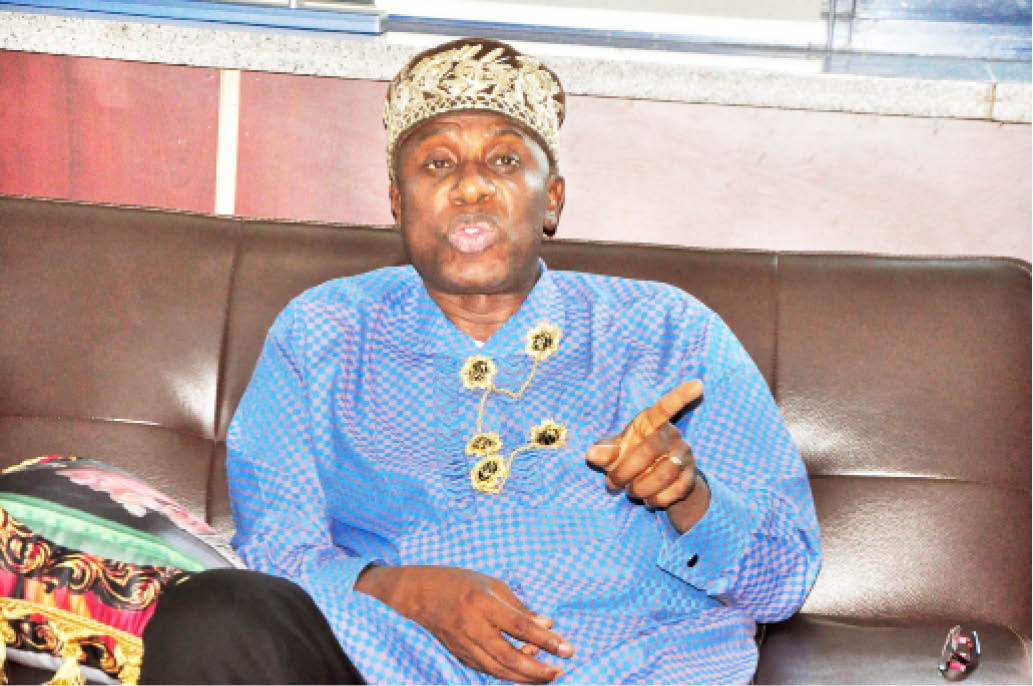Underutilised eastern seaports
Prospects of revival of the country’s eastern seaports heightened last Thursday at the occasion of the inauguration of the new Board of the Nigerian Ports Authority (NPA) by the Minister of Transportation, Rotimi Amaechi. Describing them as underutilised, the Chairman of the new Board, Akin Ricketts, lamented over their state, while noting that such a […]

Minister of Transportation, Rotimi Amaechi
Prospects of revival of the country’s eastern seaports heightened last Thursday at the occasion of the inauguration of the new Board of the Nigerian Ports Authority (NPA) by the Minister of Transportation, Rotimi Amaechi.
Describing them as underutilised, the Chairman of the new Board, Akin Ricketts, lamented over their state, while noting that such a situation had far-reaching impact on the country’s economy, as it was responsible for the congestion which has crippled business at the western ports of Apapa and Tin Can Island; all in Lagos.
Ricketts then pledged that his new board would strive to resolve the situation by improving the conditions of the eastern ports.
The eastern ports comprise Port Harcourt and Onne (Rivers State), Delta in Warri (Delta State) and Calabar (Cross River State). As envisaged, the eastern ports are to service the eastern part of the country comprising states located east of the River Niger.
For several years, the western ports have been under a state of strangulating congestion, with roads leading to them routinely clogged by unclaimed imported vehicles and assorted cargo, which in turn delay and deny onward passage of cleared cargo to their destinations for as much as six months in some cases.
By official account, the stock of unclaimed cargo occupies as much as 90 per cent of the storage capacity of the NPA, thereby posing a huge logistic headache to the organisation.
The situation has remained a major drawback for the country’s maritime business, with attendant huge losses in revenue and operational convenience.
This is because of the critical importance of the seaports to a Nigerian economy with preponderant dependence on imports of consumer goods, as well as industrial raw materials and equipment.
Incidentally, the problematic state of the country’s ports is not new, while the causative factors are also not far-fetched.
For instance, one of the reported age-long problems of the eastern ports is that of narrow and shallow channels connecting them to the ocean, with associated high cost of dredging, as well as clearing such waterways.
Other issues that have made them less attractive to port users include the differential in freight charges when compared to western ports, and the deplorable state of infrastructure in them.
Yet another is the challenge of security for maritime operations in the eastern zone.
Presently, many ship owners and operators in the eastern zone rent private vessels which are manned by armed naval personnel to escort their vessels of interest into and out of Nigerian waters.
And this is usually at significant cost to the vehicle operators.
Little wonder that over 60 per cent of cargo coming to Nigeria end up in the western ports, even when the importers may not be from that zone.
Meanwhile, it would be recalled that as apparent responses to the challenges of these eastern ports, the NPA in 2018 announced that it planned to invest N1bn to tackle the problem of reviving the eastern ports.
Also, in 2019, the NPA announced a reduction of 10 per cent in port operational charges for use of the eastern ports by categories of ships, namely those with 250 of 20-foot equivalent containers, general cargo of 16,000 metric tonnes, combo vessels of 16,000 metric tonnes, as well as roll-on roll-off vessels with 250 units of vehicles.
It would seem that such measures are yet to sway the port users to step up significantly their use of these eastern ports as the affected ports still lack the operational ambience and infrastructure for trouble-free patronage by port users.
Many observers attribute the current problems of the country’s port system to the 2006 measures by the Federal Government to concession the ports and the attendant withdrawal of 30 per cennt incentive granted to vehicle owners who use the eastern ports under their control by government.
However, while the concession was to attract better business for the ports (including the eastern ports), the reverse was the case.
Hence while the concern of the chairman of the new NPA board remains valid, the onus still lies on the management of the agency to bring the eastern ports into full operational status.
